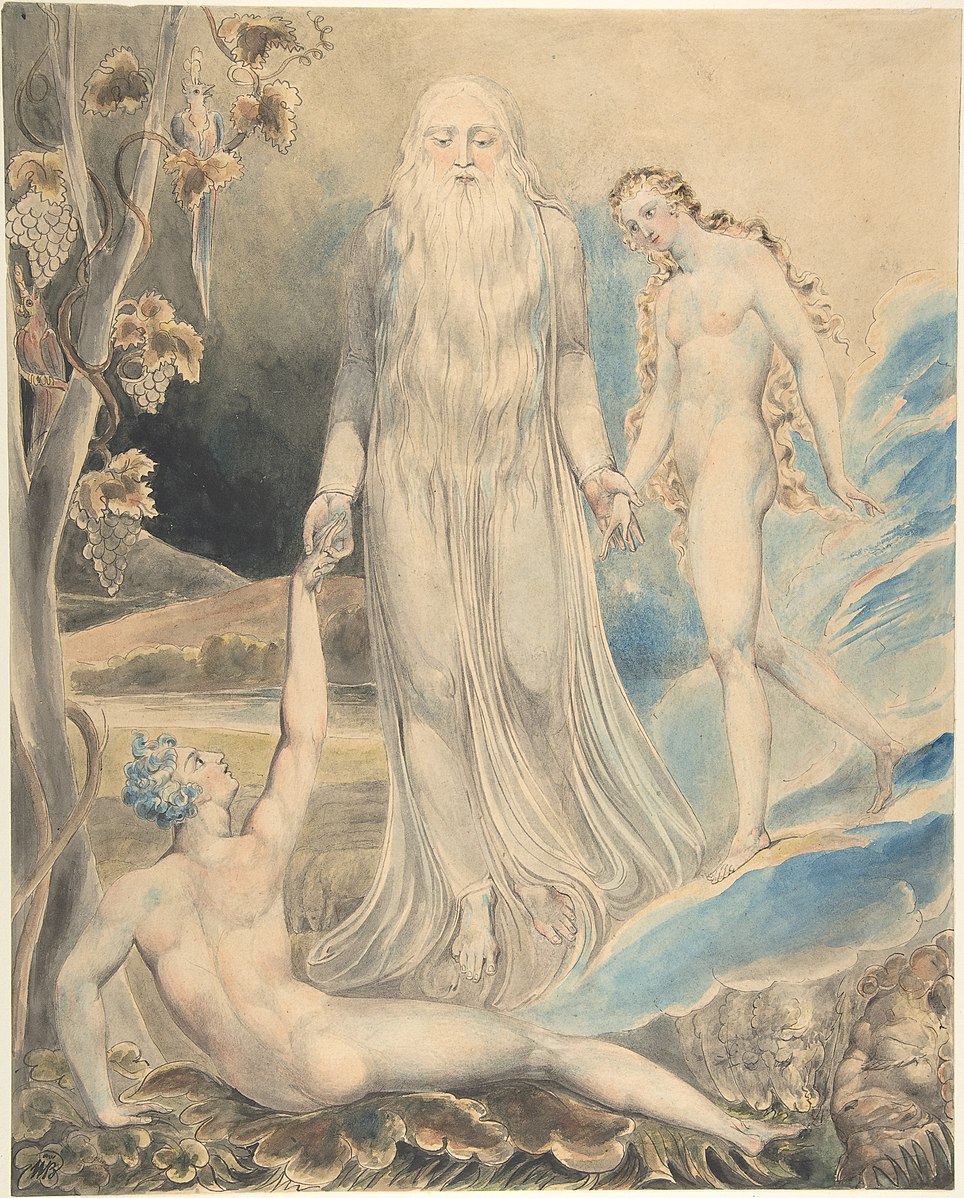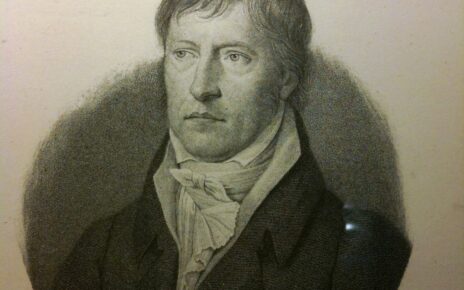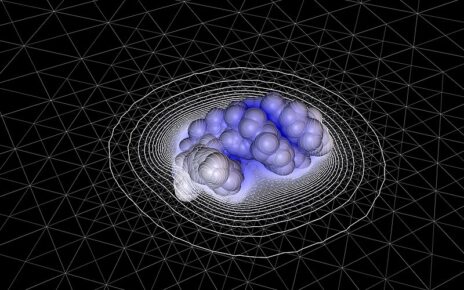The following is the second of a two-part series. The first can be found here.
Simone Weil’s Rejection of “The New Science”
Two not unrelated factors result in her rejection of ‘the New Science’ besides her opposition to Planck’s stance on Quantum Theory. The first is her emphasis upon Plato’s ontology rather than Plato’s epistemology. Secondly, that ontology is forwarded as a dualism between the supernatural and the natural, between the Divine and Necessity, between Grace and Gravity and between Exsistence, – this term referring to the realm of transcendental perfection – the cosmic or contemplative realm, and existence experienced every day.
Plato’s ontology has been traditionally well rehearsed and renders a challenge to readers of his Middle Period Dialogues such as Phaedo and Republic. How can the eternal realm be related to the temporal, the cosmic dimension to everyday existence given that extreme dualism: the reality of Being transcendent to that of Becoming; the eternal opposed to the temporal; the realm outside the cave to that of the inner darkness within. Simone Weil offers a solution to this standard objection in the use of her bifurcation in recasting the idea of eternality as the Divine and her articulation of Necessity.
But does that recasting not obscure rich lessons to be learnt from Plato’s epistemology? Consider his distinctions progressing from imagining (Eikasia), through to trusting belief (Pistis), to Reasoning or Inferring (Dianoia) to the final stage, Knowing (Episteme) and Intellectual Insight (Noesis)? In fact she is very hard on imagination: “The imagination is continually at work filling up all the fissures through which grace might pass.”[1] Earlier, she was less hard: “Objects assume a shape only through our imagining what we call their real shape. We call the real shape the shape which appears to us when the object occupies the whole of our visual field.” But ambiguity remains. Speaking of viewing a star-lit sky she says: “— one sees an object which the mind can grasp. One has the feeling of something eternal, of something pure, because the imagination cannot bring it within its scope. In a cloudy sky, we can imagine anything we wish.”[2]
Indeed, in these very lectures she contrasts perception, connected to an instrumental consideration – actually getting things done – to the emotional where obstacles are regarded passively and imagination sets to work. Consider her own activity subject to conditions of forced labour, where the mind constructs escapist images to obfuscate the sheer misery of factory work.[3] As for Sartre, in his Psychology of the Imagination[4]– composed ten years later – imagination is hooked to the emotional, inferior to cognitive understanding.
But both he and she do not distinguish adequately between an active imagination and a passive imaginary response to what exists. And as Heidegger saw in his Plato’s Doctrine of Truth,[5] it is Plato’s use of the image of the cave which enables us to relate his analogy of the sun to the Good to its significance for his theoretical construction of the Divided Line. Here distinctions between different kinds of awareness are made manifest. And Simone Weil’s lack of an application of the stages of Plato’s Divided Line – articulating these kinds of awareness – is more odd given that her own life can be regarded as passing through these very stages themselves[6]: passive imaging resulting from a condition of social repression triggering contingent necessities characterizing factory life; natural necessities governing common-sense beliefs generated by toils embedded within agricultural work: “Necessity enters into contact with the intelligence through knowledge of the second kind and with sensibility through affliction.”
Two further kinds can then be distinguished: knowledge of the ‘third kind’ as she calls it,[7] released when a person can become aware through reasoning of an ‘order behind necessity’ whilst growing out of this kind of awareness is a fourth dimension – behind knowledge of this ‘third kind’ – beyond human inferential reasoning to the incomprehensible: “That is why mysticism is the only source of virtue for humanity.”[8]
Implications for Simone Weil’s Philosophy
Whether due to her rejection of the New Science because of her opposition to Planck’s articulation of Quantum Theory, or her overlooking the latent content of Plato’s epistemology in forwarding an advocacy for his ontology, it is clear that the possibility of a tripartite ontology is reduced to a dualism between Divinity and Necessity, the latter cast as “— an order – an order of conditions.” That dualism is expressed as follows: “God’s absence is the most marvellous testimony of perfect love, and that is why pure necessity, the necessity which is manifestly so different from the good is so beautiful.”[9]
Thereby, in terms of the distinctions drawn so far with respect to the claims of SRO, the cosmic dimension is prior and fundamental for Simone Weil – in way that the cosmological is not for Ladyman and Ross – a dimension converted into “a theocentrism”, whilst the realm of Necessity is to be understood as endured at the ‘middle-sized’ objects perspective. And in respect of this perspective, Divinity is cast as “God-in-his- powerlessness” which might be characterized as God’s actuality for us in this ‘middle-sized’ objects perspective as opposed to Divinity’s Reality or the Divine exsistence, “God-in-his-power”[10]
To illustrate this difference between existence and actuality, my grandson is quite likely to be existing tomorrow but his actuality – whether sad, angry, happy or whatever – is beyond prediction. The distinction, however, between Divine Exsistence, God’s necessary existence – Simone Weil would speak of God’s Reality – and Divine Actuality, the how or in what manner the Divine is actualized somehow in our experience, is Hartshorne’s distinction.[11] And Divine actuality is realized as a result of Divine exsistence being emptied just as the human being is required to empty itself of its self-orientation.
This is Simone Weil’s crucial insight: decreation rather than creation[12] applying both to God cast in a cosmic dimension and to Divine activity understood as a result of such decreation for the everyday. But to understand Divinity cosmically or theocentrically is to recognize its infinite character, “to whom nothing is lacking” whilst something is originated from the Divine that is outside that Divinity itself and thereby not itself, yet “proceeding from” itself.[13] In that sense what is found within the ‘middle-sized’ objects perspective speaks “— about God”[14] somehow. But can’t that perspective be better reinforced by considering the micro-level perspective, even if it is rejected as a possibility by Simone Weil herself?
For an advocate of the New Science, to exist or to be “— is to be a real pattern”[15] where the latter encodes ‘information’ about a real structure, information “—about other real patterns.”[16] In this way, contrary to Simone Weil’s conception of her New Science, the nature of reality at the micro-level, carried “— implicitly in our best theories” means that quantum physics undoes “— the metaphysics of substance”.[17] So when it is claimed that ‘it’s real patterns all the way down’, what is implied is that a pattern “— is just relations among data”.[18] Interestingly, it can then be claimed that in the interest of not postulating non-redundant information, a pattern must be real in that it “— must be required” to sustain a “counterfactual-generalization-supporting information.”[19] Consider in this context Simone Weil’s experimental ontological proof:
“An experimental ontological proof. I have not the principle of rising in me. I cannot climb to heaven through the air. It is only by directing my thoughts toward something better than myself that I am drawn upwards by this something. If I am really drawn up, this something which draws me is real. No imaginary perfection can draw me upwards even by the fraction of an inch. For an imaginary perfection is mathematically at the same level as I am who imagine it – neither higher nor lower. What draws one up is directing one’s thoughts towards a veritable perfection.”[20]
Weil casts this claim in a different way elsewhere: “But we can say: the fact that man can pass into a state of aesthetic contemplation before a spectacle of nature as before a Greek statue is a proof of God.”[21] Yet, because of Ladyman and Ross’s verificationism and physics cast as a primary form of knowledge deserving of a special status,[22] such a possibility is ruled out: uninteresting both physically and metaphysically even if “anthropologically interesting.”[23] But what about that slogan ‘— it’s real patterns all the way down.’
Now if patterns are cast as relations within information, or among data, then it is not unreasonable to suppose “— that these relations should be explicated in terms of processes.”[24] But that implies that “objective potentialities and probabilities” – understood as regularities or in law-like terms – come to the fore rather than an advocacy of determinism.[25] And in this way a different meaning might be rendered to a strange remark Simone Weil makes.
First of all she claims that “God undoes the harmony in which he is constituted in creating man – a creature who prefers himself to God. Creation is already a passion.” She then continues; “God is an eternal act which is ever unmaking and remaking itself at the same time. In God, there are eternally and simultaneously perfect and infinite suffering and perfect and infinite joy.”[26] The difficulty arises as to whether the Divine is being described from the cosmic, theocentric standpoint – an Exsistent – a non-presence for us, or from the way Divinity is actualized in our world, in the middle-sized object perspective.
One way out of this dilemma would be to grasp the idea of the Divine as a harmony, thereby referring to the Divine nature existing through an unchanging unity embodying possible patterns cast as Ideal Forms In this way that eternal character can offer guidance in its ever ‘unmaking and remaking itself’ as its actuality is manifested in the middle-sized object domain and so realized. The latter thereby refers to Divine actuality, the former to exsistence since this eternal aspect is non-perishing and not temporal.
If Simone Weil were alive today, in a less hostile mood, she might draw attention to the way through the history of science certain theoretical structures are inherited and expanded as well as unifying previously accepted theoretical structures. Her realism could then be sustained by “— viewing the history of science as a progressive accumulation of knowledge”.[27] In this way it could be claimed that particular phenomena – experience under experimental conditions – represent or confirm such theoretical structures, such phenomena cast as imitating Platonic Forms.[28]
The structure and order of such ideal patterning within phenomena would change according to their appropriateness for an emerging world characterized as Divinity decreating itself though the character of such ideal patterning in relation to Divine eternality which would not alter. This conjecture is offered since it seems that the relation between what might be called the eternal, unchanging, self-sameness of the Divine and Divinity regarded as undoing itself is not really clarified in Simone Weil’s writings. In this way what can be regarded as potential timelessness can be related to the temporal nature of actuality. Hence Whitehead’s comment: “The things which are temporal arise by their participation in the things which are eternal.”
So agreement of this view with her own stance cannot be guaranteed. Being hostile to Aristotle, she would not be able to sustain priority for actuality in making sense of eternity: “— apart from things which are actual, there is nothing – nothing either in fact or in efficacy”, Whitehead’s ontological principle. Instead, she would accept an alternative: giving priority to exsistence following a traditional Platonist stance, rendered by Whitehead in the following terms: “In God’s nature, permanence is primordial, and flux is derivative from the world.”[29] But reconsider her stance. We are toldthat humans are free since we have been created by the Divine: thereby “We are outside his kingdom.”[30] A part of Divine being is abandoned to create “what is other than—” the Divine.[31] So the possibility of evil is part and parcel of decreation in its creation of humans since “Evil is a condition of de-creation.”[32]
One might ask: ‘Why is evil’s existence so important, and indeed our awareness of it?’ As a reply, imagine circumstances where consumerism could render to everyone what they wanted. Indeed, everyone, given suitable genetic engineering, could be conceived to be fortunate in not wanting what cannot be attained, We are now in Huxley’s Brave New World where individual selves would no longer exist in the sense of being able to choose either to resist or conform to such a presently existing status quo.[33] In such an artificially created world anyone seeking to be at a distance from such a perfect existence would have to regard him or herself as estranged, a problem or even mad: “If there were no affliction in the world, we should be able to believe ourselves in Paradise. Horrid possibility.”
It would be horrid because such a world would have been created by humans themselves: “Man is a social animal and the social element represents evil. There is nothing we can do about it, and yet at the same time we are not permitted to accept it as such, under pain of losing our soul. It follows that life cannot be anything else but spiritual laceration.”[34] Nonetheless, such pessimism has still to be cast in the light of her claim that there is always some concern for beauty even in “— more or less distorted or soiled images. As a consequence there is not any department of human life which is purely natural. The super-natural is secretly present throughout.”[35]
Conclusion
An attempt has been made to interpret Simone Weil’s writings by appealing to the idea of Scale Relative Ontology (SRO), as suggested in Ladyman and Ross’s book Every Thing Must Go. To sustain the idea of SRO is to insist that our understanding of what it is to be a human being and our place in the universe depends upon the cognitive scale employed in interpreting it. Three such scales were articulated: i) the cosmic or contemplative dimension illustrated in Von Schelling’s writings; ii) ultimate significance rendered to the realm of middle-sized objects characterizing common sense and expressed in ordinary language which Hegel’s philosophical ruminations prioritize; iii) the scientific or theoretical stance exemplified in Ladyman and Ross’s stance.
In Simone Weil’s writings a kind of SRO is employed, but becomes dualistic rather than tripartite in nature as a result of her extreme Platonism where the opposition between Being and Becoming is recast as that between Grace and Gravity, Yet a tripartism emerges in her treatment of science. She claims that Greek science is haunted by a sense of the cosmological and thereby “the relation between order and the conditions of order.” Classical science, emerging in modernism, through to the 19th. Century – concerned with the practical – was indebted to the ideas of work and energy. Contemporary science is dismissed as being too theoretical since its principle “— is simply the relation between algebraic formulae devoid of meaning on the one hand and technology on the other.”[36]
And, if not dismissed then subsumed – because of its application – under the idea of its everyday existence, sustaining her dualism, between her conceptions of Reality or Exsistence – the realm of Grace – and everyday existence, subject to Gravity. Possible reasons for that dualism were explored, especially her passion for Plato’s ontology rather than his epistemology, besides examining her dismissal of Planck’s defence of his Quantum Theory.
Now for her it is the cosmic or theocentric dimension which is given pride of place in opposition to Ladyman and Ross ascribing priority to the micro-level realm. That opposition between these two stances generates an interesting contrast. In the world of Ladyman and Ross what is created in the domain of middle-sized objects initiates exploration at the micro-level, whilst discoveries at the micro-level explicate not only the nature of middle-sized objects – some of which make exploration at the micro-level possible at a deeper level – but can be extended and applied to explain the nature of the cosmological dimension itself.
Analogously for Simone Weil, what is actual in the domain of middle-sized object’s creation under the rule of necessity can provide access to the Divine through aesthetic experience whilst Divine experience can initiate a sense of order to the world which contemporary human beings have lost, lost as a result of the world-wide use of an instrumental sense of science legitimated within the development of scientism: “To find a place in the budget for the eternal is not the spirit of our age”[37] Her stance, as compared to that of Ladyman and Ross is summarized in table 2 below.
Conjectures were then forwarded to ascertain how her notion of the eternal might be related to her conception of the Divine unmaking and remaking itself through an eternal act, arguing for a dipolar conception of Divinity cast in terms of the Divine’s dualistic nature, an idea developed in Process Philosophy by Hartshorne along with Whitehead himself. But that possibility is in need of further clarification.
In the meantime, what is clear is that whilst Ladyman and Ross reject the cosmic or theocentric dimension, grant pragmatic value to the middle-sized object perspective and ground truth at the micro-level, Simone Weil dismisses the latter and takes the value of the middle-sized object perspective as revealing, through contemplative activity, the cosmic or theocentric dimension. Meanwhile ordinary philosophical activity in the analytic tradition today – following the majority of followers of the later Wittgenstein’s ruminations – reifies the realm of middle-sized objects, turning its back both on the cosmic and the micro-levels. In this way, ignorance can appear as a virtue, whilst any sense of the spiritual disappears.
Scale Relative Ontology (SRO) and Simone Weil’s Stance
| Scale Relative Level—> | Cosmic Reality | Everyday Existence | Contemporary Scientific Stance |
| i) Standpoint | The Contemplative | The Practical | The Theoretical |
| ii) Measured Dimension | Cosmological; for Astro-Physics no mountains! | Middle-sized status renders existing individuals | Micro-Level; Every Thing Must Go |
| iii) Example of Philosophers | Schelling; Plato | Hegel; Conceptual Analysts | Ladyman & Ross |
| iv) Focus | Eternality | Temporality | Measurement determines temporal issues |
| v) The Language Issue | The Inexpressible; Intellectual Intuition given pride of place issuing in Experience | You can’t say what there is; you can only say what there is! Concepts first! | Complex inductive reasoning giving abstract expressions; Scientific reasoning |
| vi) Epistemolo- gical Claims | Emphasis placed upon the Arts and Aesthetics, Platonic philosophy, & Religious Experience | Different forms of knowledge generate descriptive ontological claims where possible! | Institutional norms guide a normative heuristic to make sense of scientific method. |
| vii) Simone Weil’s Stance | The Reality of Grace is realized spiritually; what intelligence does not apprehend. | Necessity; an inferior imitation of Reality grasped through intelligence | ‘To be is to be a pattern’; such a stance endorses an Instrumentalism: the New Science |
Table 2
Noel Boulting studied under Richard S Peters at the London Institute of Education to obtain his academic diploma in the Philosophy of Education and under David Hamlyn and Stuart Brown at Birkbeck College, London, to obtain his first degree in philosophy. He has taught philosophy for the Extra-Mural Department, University of London; Philosophy of Education at Trent Polytechnic and Educational Studies at Mid-Kent College of Higher and Further Education as well as created and taught philosophy courses at Great Falls University, Montana. He is author of On Interpretative Activity: A Peircian Approach to the Interpretation of Science, Technology and the Arts (Brill, 2006)
______________________________________________________________________________
[1] Simone Weil, Gravity and Grace trans. E. Crawford & M. Von der Riche, 16.
[2] Simone Weil, Lectures on Philosophy trans. H. Price (Cambridge: Cambridge University Press, 1979), 51, 187.
[3] cf. Simone Weil, Lectures on Philosophy, 72-3.
[4] Noel Boulting, “Sartre’s Existential Consciousness: Implications for Subjectivity,” Philos. in the Contemp. World 5, no. 4 (1998): 11-23.
[5] Martin Heidegger, “Plato’s Doctrine of Truth (1931–2)” in Martin Heidegger: Pathmarks, ed. W. McNeill (Cambridge: Cambridge University Press, 1998), 155-82.
[6] N.E. Boulting, “Necessity, Transparency and Fragility in Simone’s Conception of Ultimate Reality and Meaning,” Ultimate Reality and Meaning 22, no. 3 (1999): 223-46.
[7] Simone Weil, The Notebooks of Simone Weil, vol. I & II trans. A. Willis, 236, 189.
[8] Simone Weil, Gravity and Grace trans. E. Crawford & M. Von der Riche, 100.
[9] Simone Weil, The Notebooks of Simone Weil, vol. I & II trans. A. Willis, 480, 403.
[10] Ibid., 542.
[11]Charles Hartshorne, “Response to Martin” In Existence and Actuality, ed. J.B. Cobb et. al (Cambridge: Cambridge University Press, 1984), 75.
cf. N.E. Boulting, “The God of Religion and the God of Philosophy” Process Studies 50.1 (2021): 88-106.
[12] Simone Weil, The Notebooks of Simone Weil, vol. I & II trans. A. Willis, 212, 217, 284.
[13] Ibid., 386.
[14] Simone Weil, First and Last Notebooks trans. R. Rees, 126.
[15] J. Ladyman, D. Ross et. al, Every Thing Must Go: Metaphysics Naturalized, 226.
[16] Ibid., 227.
[17] Ibid., 9.
[18] Ibid., 228.
[19] Ibid., 231.
[20] Simone Weil, The Notebooks of Simone Weil, vol. I & II trans. A. Willis, 434.
Simone Weil, Gravity and Grace trans. E. Crawford & M. Von der Riche (London: Routledge, 2002), 99.
[21] Simone Weil, The Notebooks of Simone Weil, vol. I & II trans. A. Willis, 241.
[22] J. Ladyman, D. Ross et. al, Every Thing Must Go: Metaphysics Naturalized, 42.
[23] Ibid., 255.
[24] Ibid., 274.
[25] Ibid., 255.
[26] Simone Weil, The Notebooks of Simone Weil, vol. I & II trans. A. Willis, 560.
[27] J. Ladyman, D. Ross et. al, Every Thing Must Go: Metaphysics Naturalized, 65.
[28] Howard Stein, “Yes, but… Some Skeptical Remarks on Realism and Anti-Realism” Dialectica 43, no. 1-2 (June 1989): 48-9, 57, 59.
[29] A.N. Whitehead, Process and Reality eds. D.R. Griffin & D.W. Sherburne (New York: Macmillan, 1979), 40, 348.
[30] Simone Weil, The Need for Roots trans. A. Willis, 265.
[31] Simone Weil, Intimations of Christianity (London: Ark Publications, 1987), 183.
[32] Simone Weil, The Notebooks of Simone Weil, vol. I & II trans. A. Willis, 261.
[33] E.O. Springsted, “I Dreamed I Saw Augustine” Simone Weil for the Twenty-first Century (Indiana: Notre Dame University Press, 2021), 238-9, notes 13 & 14.
[34] Simone Weil, The Notebooks of Simone Weil, vol. I & II trans. A. Willis, 294, 466.
[35] Simone Weil, Waiting on God trans. E. Craufurd (Glasgow: Collins Fount Paperback, 1983), 129.
[36] Simone Weil, “ Classical Science and After; Reflections on Quantum Theory; Scientism – A Review 65-70; Fragment: Foundation of a New Science” On Science, Necessity and the Love of God trans. R. Rees, 21, 19, 7, 22.
[37] Ibid., 70.




